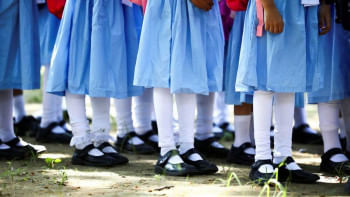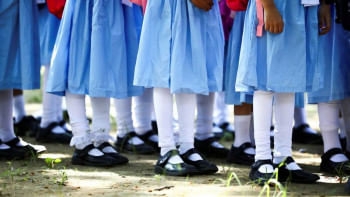Why can’t we contain child marriage?

Despite achieving considerable progress in gender equality and women's empowerment, it is unthinkable that Bangladesh still has the highest rate of child marriage in Asia—and among the highest globally—with a staggering 51 percent of girls being married off before they turn 18, as of 2020. The case of Veduriya union in Bhola, where over a hundred girls were married off in just one year, as reported by Prothom Alo recently, highlights how pervasive the crisis still is, especially in poor and marginalised communities.
According to the report, Veduriya saw these girls, including some from class 6, married off with the assistance of a local ruling party politician and his associates. It exposes the inadequacy of ongoing measures and initiatives, as even local government representatives have been found to be disregarding the law. In most cases, guardians fabricated birth certificates from the UNO to show their girls as being of legal age for marriage, in an attempt to evade scrutiny and legal consequences.
It is clear that the legal and institutional frameworks to prevent child marriages are not working as expected. The Child Marriage Restraint Act, 2017, makes aiding or forcing child marriage a bailable offence. It lacks provisions to nullify child marriages, even if the minor is abducted, kidnapped, or trafficked. Furthermore, the inclusion of "special circumstances" provision allows for girls under 18 to be married, but the term remains undefined. There is also a lack of dedicated social workers and monitoring mechanisms, especially in remote places like Veduriya.
Moreover, marrying underage girls still remains a deep-rooted patriarchal practice, which the government's social awareness campaigns are failing to address. Currently, there are no modern mass social awareness projects similar to Meena. The school-level national curriculum does not comprehensively address child marriage's adverse effects and prevention strategies. Remote areas also often lack social and religious institutions to conduct awareness campaigns. The national emergency number 109 for seeking help in preventing child marriages is helpful, of course, but how many know about this? On top of all these issues, the authorities have largely failed to recognise and properly respond to the disastrous fallout of Covid-19 on young girls and their families.
We, therefore, urge the authorities to recognise the crisis and take stern action to prevent underage marriage. Instead of undertaking ad hoc measures, a comprehensive approach is needed, including mass social awareness campaigns, robust legal and institutional frameworks to prevent such incidents, and proper support for those already affected.


 For all latest news, follow The Daily Star's Google News channel.
For all latest news, follow The Daily Star's Google News channel. 











Comments